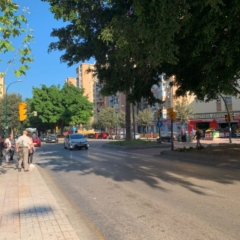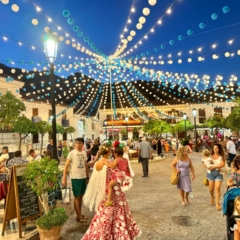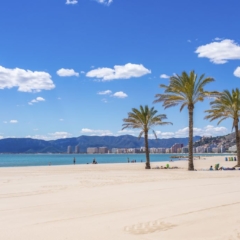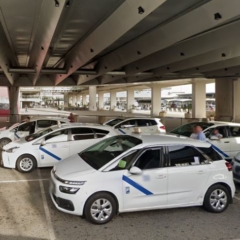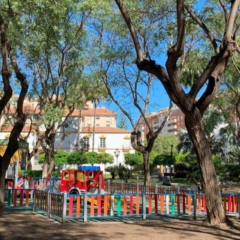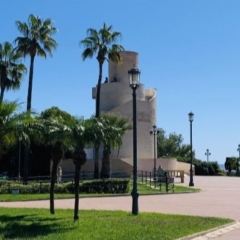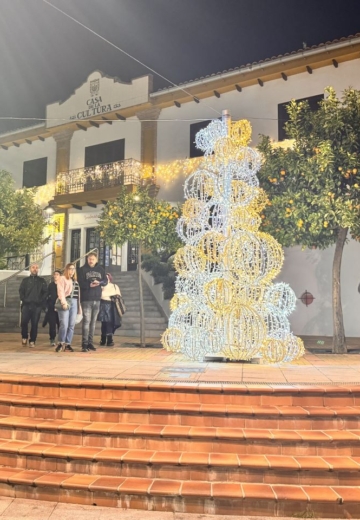Sensational Costa del Sol – the place of the best holidays
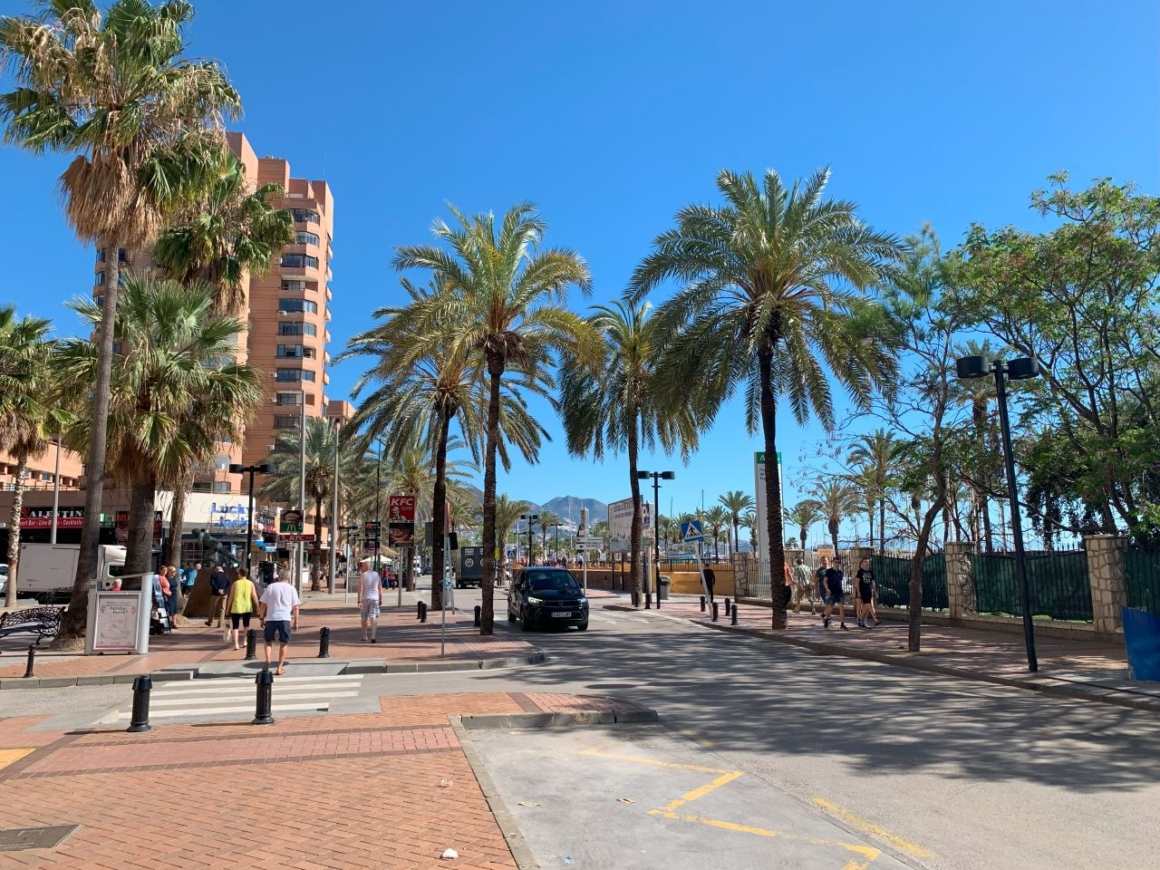
The Spanish Costa del Sol is an amazing stretch of land in the south of Spain, mostly in the province of Malaga. It is comprised by a series of towns and cities bordering the Mediterranean that share a common culture, past and lifestyle. There are many sandy beaches, some rocky beaches and sunshine all year long, with hot summers and mild winters. If you can picture a set of white houses against blue skies, with mountains on one side and the sea on another, plus a patio with a flowering bougainvillea, a table with bread, ham, olive oil and wine, you have a good idea of the area.
Where is the Costa del Sol?
The Costa del Sol is mainly the coast of the province of Malaga, in Andalusia, south of Spain. It has about 150 km of coast, divided into several municipalities. Costa del Sol is an official name; as a matter of fact, every coastal province in Spain has an official name to it, since the 1960s, a topic we covered in more depth in the Spanish Costas post. Strictly speaking, the Costa del Sol goes a little beyond Malaga province, up to the border with Gibraltar, already in the Cadiz province.
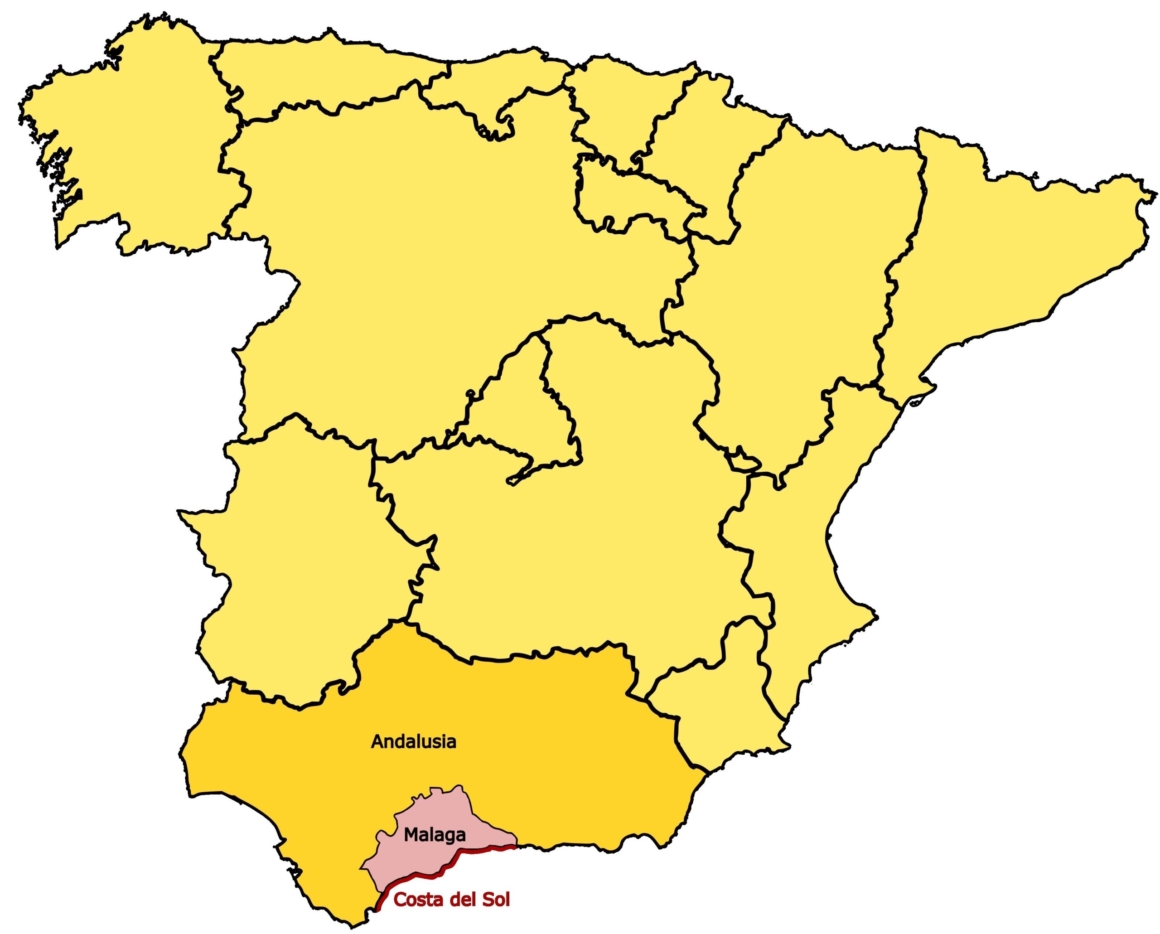
Costa del Sol means Coast of the Sun / Sunny Coast, a name chosen due to the amount of sun hours this region gets per year. Being part of the South of Spain, you can imagine it is a considerable amount – a fact that we enjoy very much! 🙂
What is the Costa del sol known for?
The Costa del Sol is known for its 300 sunny days per year, sandy beaches and white villages, in a nutshell. There is much more about the Costa del Sol, though. Besides the great weather all year long, this region of Spain is quite diverse. It has big cities – Malaga being the biggest – as well as small pueblos; commerce and industry, as well as agriculture; sandy beaches and mountains; flat areas and hilly areas.
The Costa del Sol has beautiful landscapes and a very well developed tourism industry, which provides accommodation and entertainment for millions of visitors every year (about 14 million tourists visited the Costa in 2023). The area is also known for its food and proud of the Mediterranean diet, rich in olives, olive oil, fish, rice, potatoes, eggs, fresh tomatoes, citruses, wine and bread. It’s good for the body and for the soul!
The Costa del Sol is also known for its rich history and ancient occupation, dating back to pre-historic times. Most prominently, the area was part of the Arab world for a thousand years, and to this day, it displays a mix of Christian and Muslim heritage in its architecture, food and traditions.
What cities are part of the Costa del Sol?
All municipalities on the coast of Malaga province are part of the Costa del Sol, plus two municipalities in Cádiz province: San Roque (where Sotogrande is) and La Línea de la Concepción, which borders Gibraltar.
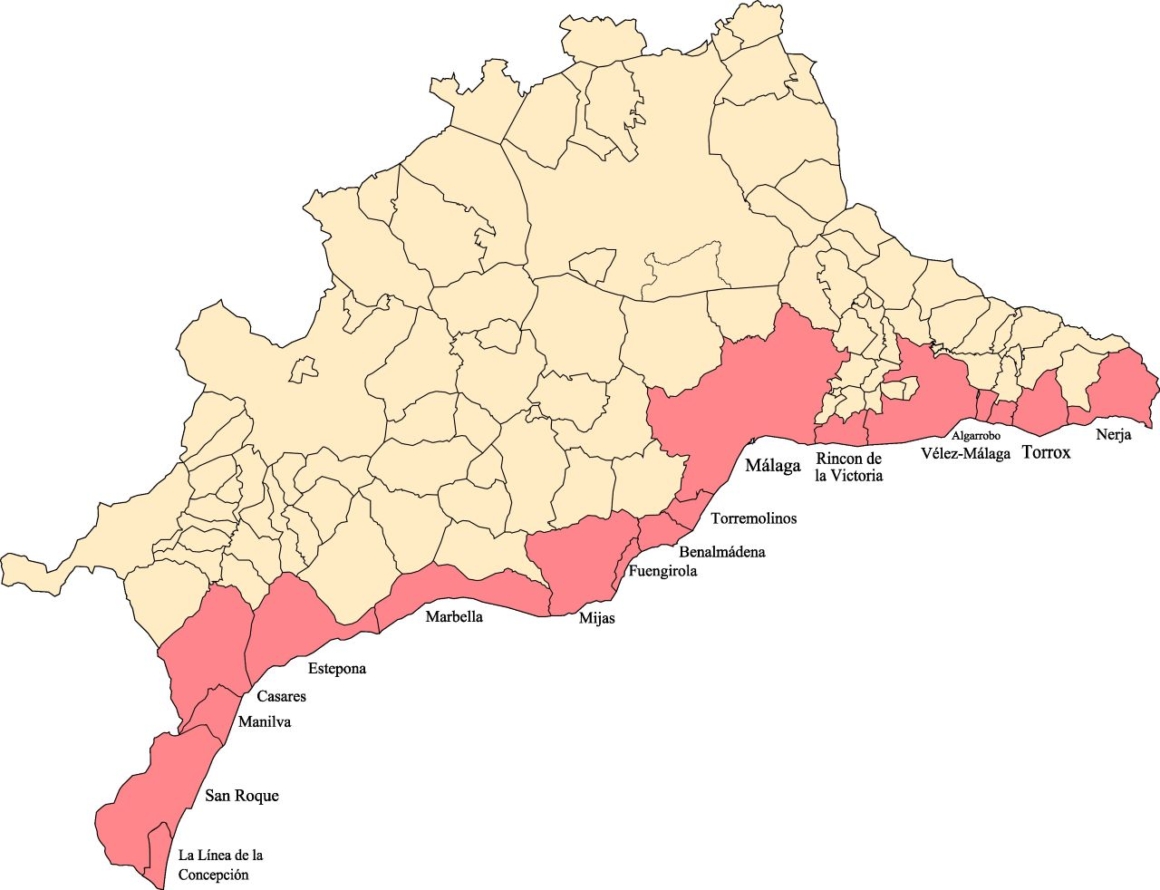
From west to East, these are the municipalities that constitute the Costa del Sol: La Línea de la Concepción, San Roque, Manilva, Casares, Estepona, Marbella, Mijas, Fuengirola, Benalmádena, Torremolinos, Málaga, Rincón de la Victoria, Vélez-Málaga (which is divided in two areas, one to each side of Algarrobo!), Algarrobo, Torrox and Nerja.
The towns east of Malaga city, from Rincón de la Victória to Nerja, both inland and on the coast, form a region known as the Axarquía. The towns southwest of Malaga, from La Línea to Torremolinos, form what is known as Costa del Sol Occidental (Western Sunny Coast). These two sides of the Costa del Sol are quite a bit different from each other! Let’s see how:
Axarquía
The towns in the Axarquía, traditionally, have been less tourism-oriented than the ones in the Costa del Sol Occidental. The Axarquía does have great weather and beautiful beaches, but has less hotels and restaurants, as well as fewer and smaller public celebrations than its western counterpart. Axarquía ‘s towns also lack a train line, making transportation between towns a lot harder than in the western side.
Likewise, the towns in the Axarquía tend to have a smaller number of foreign residents and a smaller number of tourists in summer. The economy in these areas tends to be more focused on agriculture and in providing workforce for the city of Málaga. This is all particularly true for Rincón de la Victoria, Vélez-Málaga and Algarrobo.
Torrox and Nerja, though, have diverged from the pattern, and invested in international tourists and residents’ attraction. Torrox promotes its own climate as the best in the Costa del Sol – and it works, as more than 40% of the population of the town is of foreign origin! – while Nerja like to be called the Balcón de Europa (Europe’s balcony) because of its geography; particularly a cliff by the sea, with a beautiful viewpoint – the balcón itself.
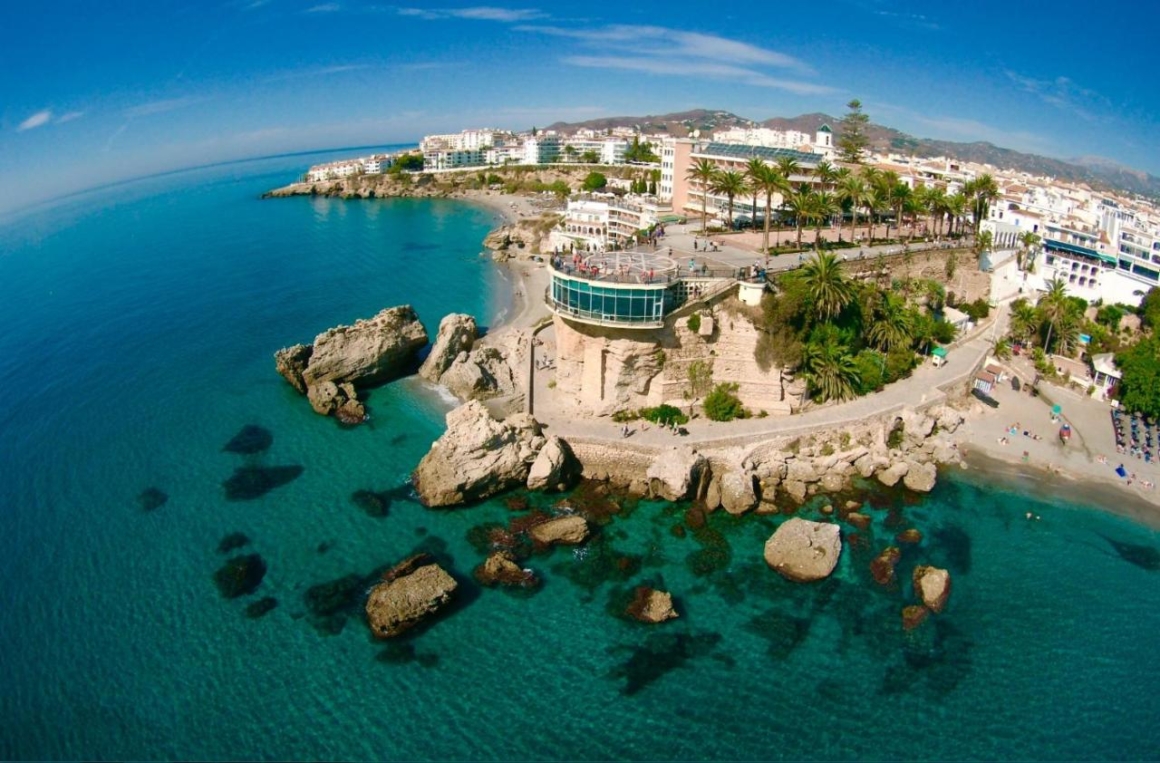
Costa del Sol Occidental
The Costa del Sol Occidental is very tourism-oriented, particularly the part that goes from Torremolinos to Estepona, which is likely the main area people think about when they hear Costa del Sol. These towns have been investing in promotion abroad and in touristic infrastructure for years – some longer than others, nevertheless. And it all started with the one that is probably, up to this day, the most well-known name in the Costa del Sol (after Málaga): Torremolinos.
Torremolinos
The Costa del Sol we know today – beautiful, attractive, well-structured to receive tourists – started in Torremolinos. The slogan “Origin of Paradise” fits the town perfectly. It all started back in the 1950s, when the then fishing village started to receive celebrities that were looking for a vacation place where they could rest without attracting too much attention; Torremolinos mix of beautiful beaches, nature and sun fit the bill, and famous actors and singers of the time started to come in numbers.
The press soon discovered the unusual concentration of celebrities in the area and followed. All of a sudden, there were pictures of celebrities in Torremolinos in newspapers all over the world, which, in turn, would change the town forever. Over the next years, hotels started to be built; travel agencies started to promote Torremolinos abroad, and the number of flights to Málaga increased – as a matter of fact, the airport of Malaga was expanded in the sixties in part because of the increase in sales of holiday packages!
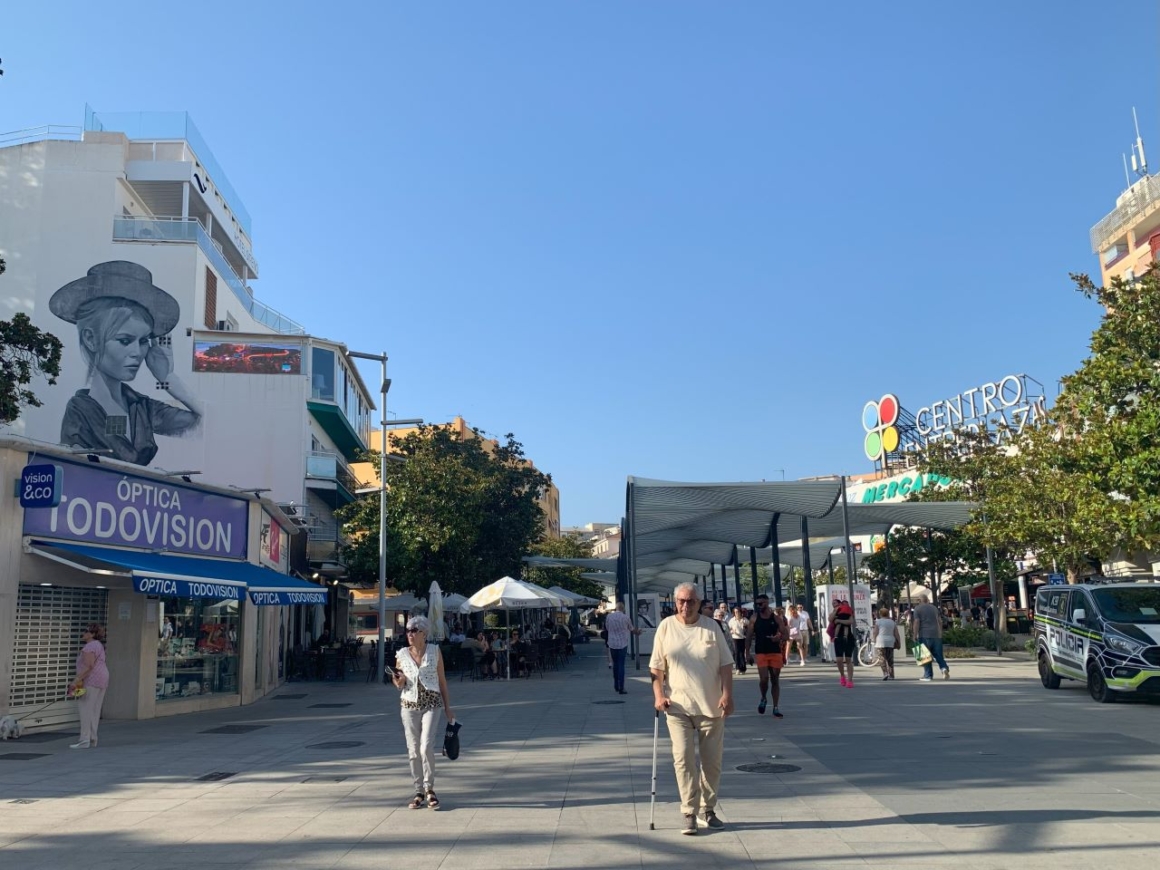
Keep in mind that in the fifties, much of Europe was under reconstruction after World War II. Spain, though, had not participated in the war and, therefore, was ahead of the continent in terms of infrastructure. It wasn’t all flowers, though; Spain had been under a brutal dictatorship since 1936, which, among other atrocities, criminalized homosexuality. The attention that Torremolinos started receiving from abroad, though, made it a relatively safe place for gays and other people being politically persecuted, as the regime did not want their actions publicized. The correlation between gays and Torremolinos started from that time.
Simultaneously, families and pensioners were flocking to Torremolinos seeking the sun. The town grew as a tourist paradise, tolerant and welcoming, which it is to this day. Immigrants, holiday makers, members of LGBTIQ+ community, families – it is all part of today’s Torremolinos. The infrastructure of the city also adapted over the decades. Torremolinos nowadays has all kinds of hotels, a magnifique promenade by the sea and the same sun and sandy beaches that attracted people from the start.
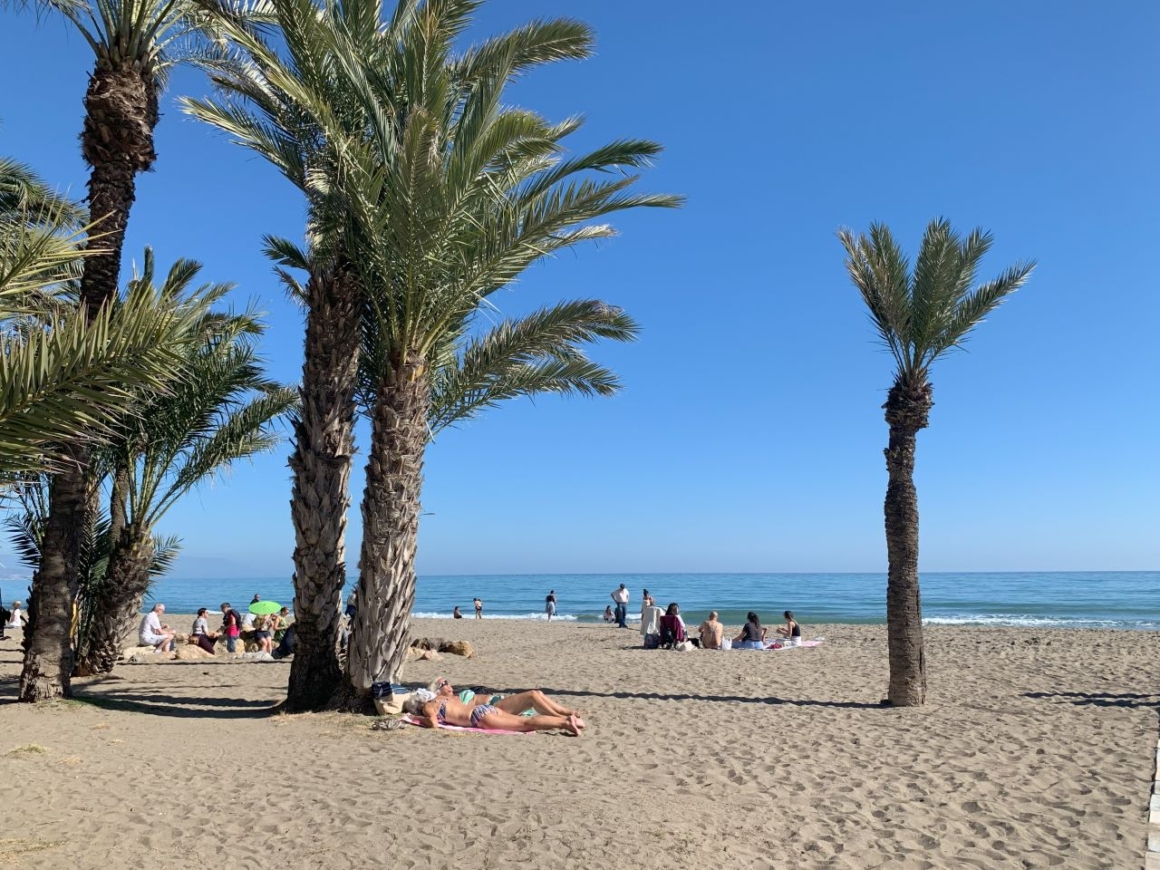
Related post:
Torremolinos Pride
All 11 neighborhoods of Torremolinos
Benalmadena
As the coast of Torremolinos got packed with hotels and apartment buildings, its development started to spread through Benalmadena – so much so, that the Puerto de Benalmadena was, for a moment in time, known as Puerto de Torremolinos. Benalmadena then decided it was time to share in the neighbor’s prosperity, and chose a great angle to do so: it started to build infrastructure oriented to families with children, and to promote itself abroad as well.

The first main development in this direction was the opening of Tivoli world, a large amusement park, in 1972. Since then, Benalmadena has included the large Parque La Paloma, an animal park (Selwo Marina), an aquarium (Sea Life), a Butterfly park, skate park, a Ferris Wheel, and even a place where people can go play board games for free (Casa de la Juventud). The library’s kids’ section is great!
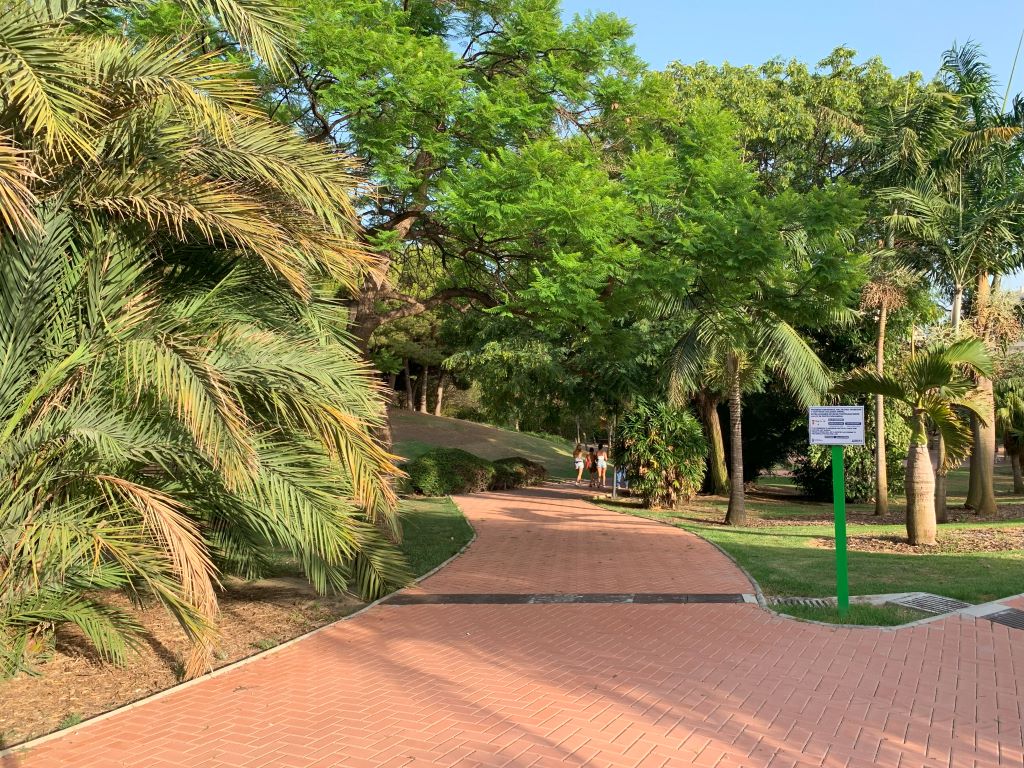
The thing that stands out the most (to me), though, is the amount and quality of the playgrounds of the town. It doesn’t go unnoticed, too, that every main leisure area of the town has one (or more). Plaza de la Mesquita, where events happen often, has two – one of them for small kids (parque Pocoyo); Plaza Pueblosol has a large one, right by the Town Hall; Benalmadena Pueblo has one behind the church; the Marina has a (paid) amusement park (Parquelandia), and there are several small playgrounds spread in the residential areas and even on the beaches.
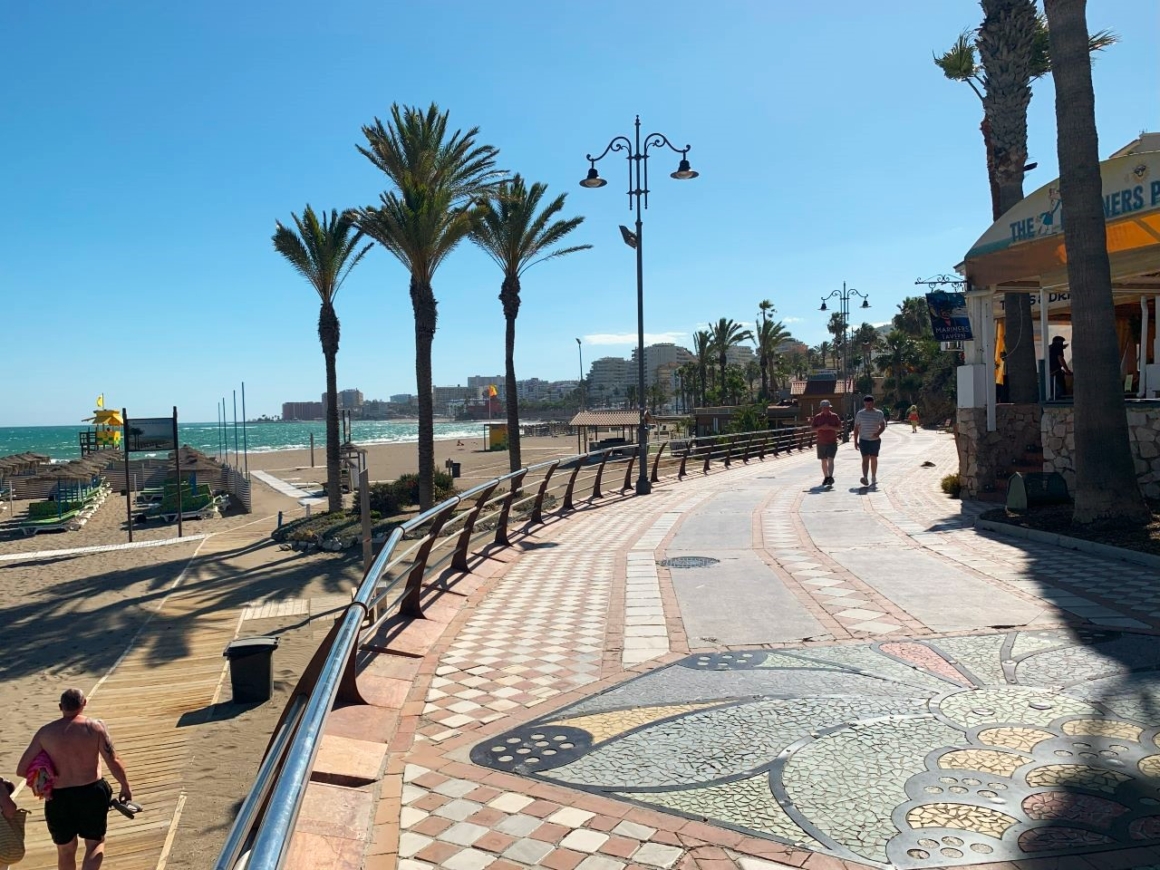
I find it surprising, though, that Benalmadena doesn’t explore this angle when promoting itself. The town’s slogan used to be something on the lines of “Benalmadena, a destination for everybody” probably because saying it was for families would sound homophobic, in the context. The current slogan is simply “Enjoy Benalmadena” which is far from good enough for this gem of a place.
Related posts:
Benalmadena for kids!
The 9 Benalmadenas
Fuengirola
Benalmadena’s development did not spread to Fuengirola. As a matter of fact, the border between both towns is still an active construction site. Fuengirola started to attract people on its own, as part of the tourist boom that happened in the sixties in the coasts of Spain. Fuengirola is lovely. It is a small stretch of coastal land, of about only 11 km2, which differentiates itself from the rest of the Costa del Sol for being flat (if flat doesn’t sound appealing, you probably don’t live in a hilly place).
Fuengirola is mostly built up and compact – the population of Fuengirola is bigger than Benalmadena’s and just a bit smaller than Mijas (check the map of the Costa del Sol, up in this post, to compare their sizes…) the advantage is that everything is near; the disadvantage is that there aren’t many green areas left.

The town has a nice seaside walk, a shopping center with cinema, several international shops and restaurants – about one third of the population is foreigner – great train connections to Benalmadena, Torremolinos and Málaga, as well as plenty of buses. Best of all, everything is close to the beach!
Fuengirola also hosts two fairs per year, one dedicated to the patroness of the city, and the other dedicated to the several cultures around the globe, the Feria Internacional de los Países in April / May (they are both great, but the international one is also very unique). Both fairs are very much worth visiting, as well as several shows in the Marenostrum. The town is also probably the most pet-friendly in the Costa del Sol. Fuengirola’s slogan – a sun of a city – gives a proper idea of the town, sunny and vibrant.
Related posts:
Feria del Rosario in Fuengirola
Feria de los países en Fuengirola
Traveling to Spain with a dog? Fuengirola!
Neighborhoods of Fuengirola
Mijas
Mijas resembles Benalmadena in several aspects: they both have a pueblo, which is the site of their initial occupations, centuries ago; they both have a modern center of the town, with plenty of commerce and residential areas (Las Lagunas), and both have a coastal side of more recent development (La Cala de Mijas, Calahonda, El Chaparral and El Faro).
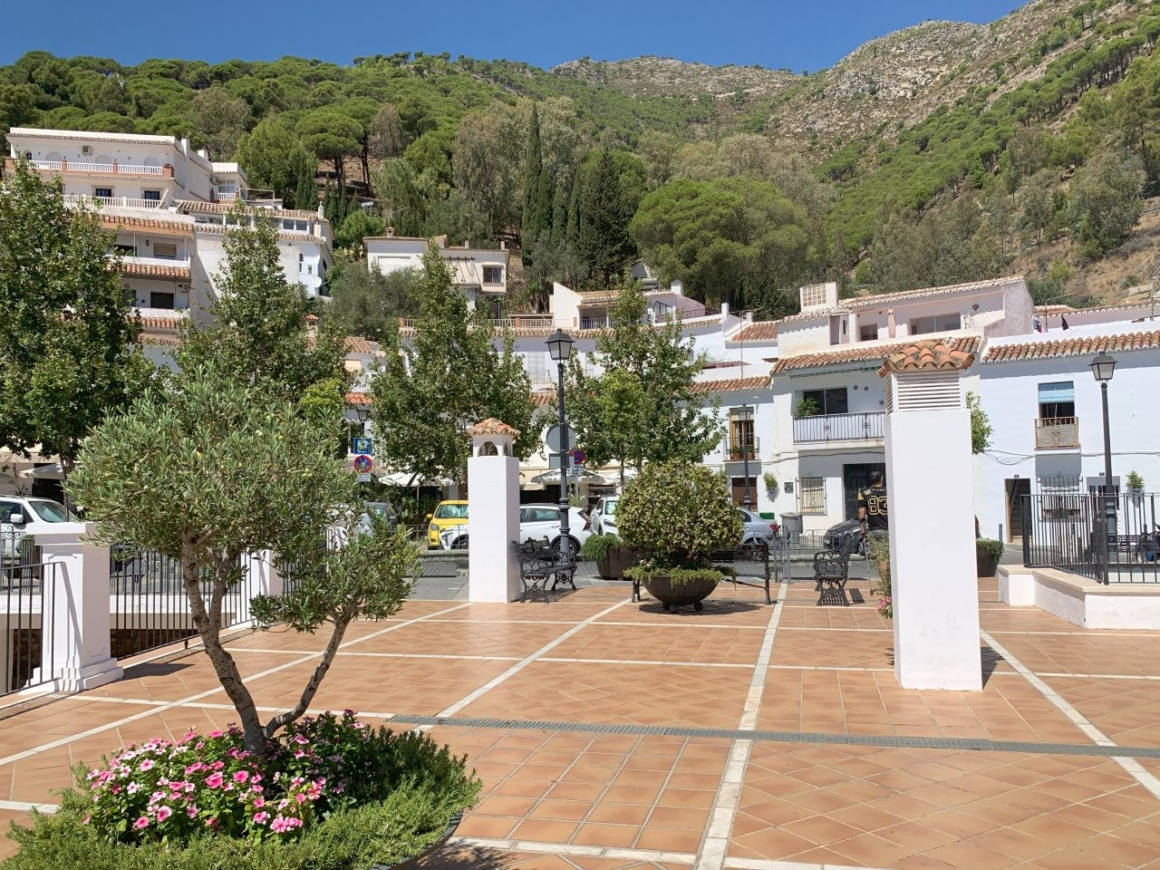
Mijas strongest suits are: Mijas Pueblo, which is adorable, accessible by bus from the nearby towns and quite high (400m above sea level) – which means it has great views of the coast; the many golf clubs (more than 10!) spread through its terrain and the precious coastal region. The coastal side of Mijas has more of a small village feel, when compared to the previous 3 towns of the Costa del Sol. This may have something to do with the public transport to the area, which is rather limited.
Mijas slogan, which translates as ‘living again’ probably relates to the quality of life the town exudes: slow paced and surrounded by impressive views, be it on the shore or on the mountains.
Related Post:
The beauty of Mijas Pueblo
Marbella
Marbella is associated worldwide with money and luxury. Its most famous Marina (yes, there are a few) is Puerto Banus, where large yachts can be found side by side with brands such as Gucci and Dolce y Gabbana; a bit more inland, and the car dealerships of Bentley, Ferrary and Jaguar sit side by side. Starting from Puerto Banus toward the center of Marbella, we find the Golden Mille, possibly the most expensive area in the Costa del Sol (below, a bit of the area).
It’s mainly this association with high end brands that inspires Marbella’s slogan – ‘feel the excellence’. Other than Puerto Banus and the Golden Mille, though, Marbella is similar to the other towns around it – great weather, views and food; limited or bad public transportation. There is another downside to this golden paradise, though: crime. Marbella is known to have drug dealers and gangs, and the whole lot of criminality that comes with it – people that makes false document, hitmen and the likes. In 2024, as of this writing, there have also been at least six shootings in the town.
Estepona
Estepona is the cutest thing ever. Flowers, flowers everywhere, which gives this little gem the nickname of garden of the Costa del Sol. Now, Estepona is some 90 km far from Malaga (measured center to center) and I have the impression that the town took a bit too long to realize its touristic potential. The infrastructure there is somewhat still being built, notoriously when it comes to transport – absurdly, the town has just two bus lines.
There are buses that go there from other towns, but you can’t really use them to move within Estepona – pure politics; it has to do with permissions and concessions. Only Autobuses Ricardo can both take and leave costumer in the city – a bit crazy. If you plan to stay there, I’d recommend renting a car! The promenade is great, though, and the town center is quite interesting and big.
Related post:
Stress-free car rental in Malaga
What is the nicest area of the Costa del Sol?
The towns along the Costa del Sol have more in common than differences; the nicest area will rely on details and personal preferences. They all have great weather, year-long sunshine, sandy beaches, palm trees, historical sites and plenty of seafood. If you are looking for these things, you are right no matter where you go in the Costa del Sol. Now, if on top of that, you want a big city, Malaga is the right choice; for lively events, day and night entertainment, a large diversity of restaurants and pubs, great offer of hotels and an international community, then the stretch from Malaga to Fuengirola is your place to be.
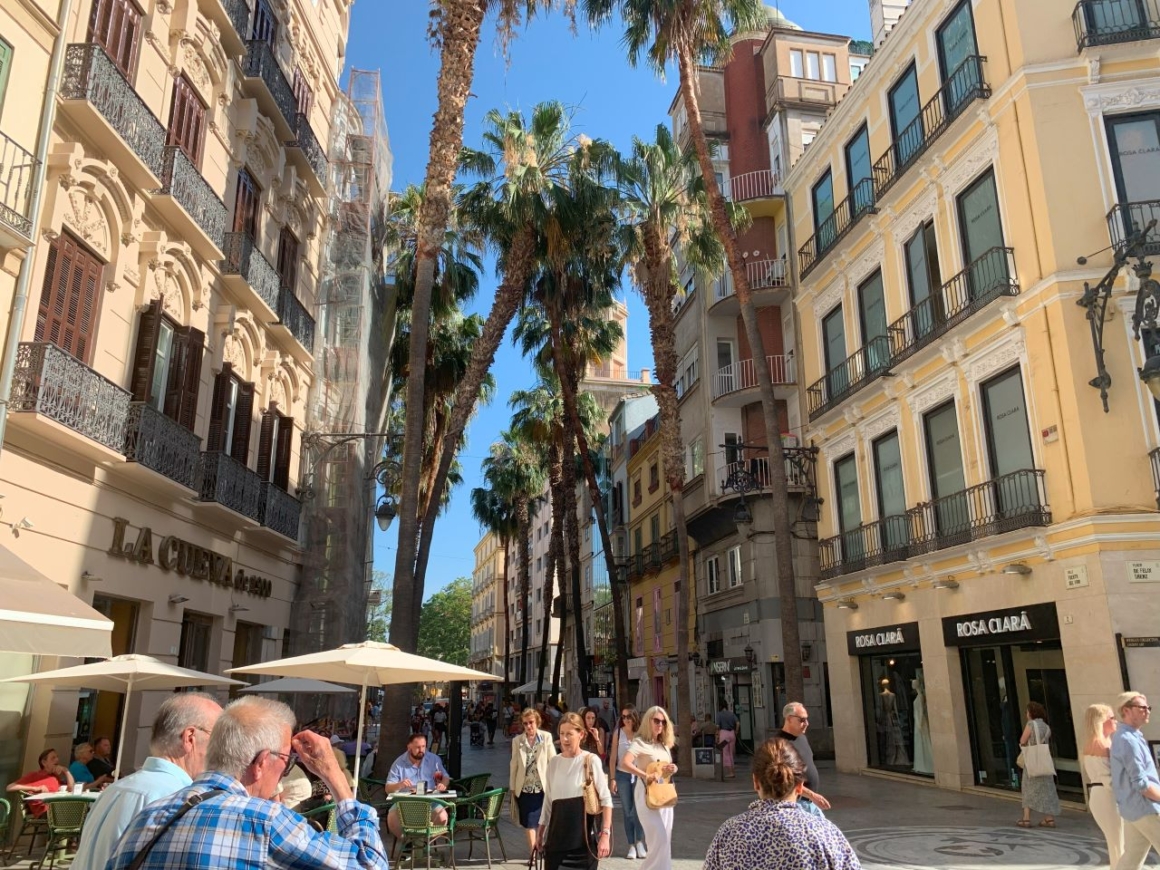
For nightlife and particularly for the LGBT crowd, Torremolinos is the place; traveling with kids, Benalmadena is unbeatable; with pets, Fuengirola will have the best support; for golfing, Mijas, Marbella and Estepona offer the most greens; for luxury shopping, Marbella is the spot. For just chilling under the sun, the areas from Rincón de la Victoria to Velez-Malaga will do you well.
If walking is your thing, Fuengirola is great and flat; for promenade walking, I find Torremolinos and Estepona have spectacular seaside walks – and the one in Benalmadena is very good too (but shorter). Mijas and Benalmadena are also good spots for trekking. If you want to visit traditional pueblos, Mijas Pueblo and Benalmadena Pueblo are everything you want and then some. And there is also Frigiliana, which is one of the most beautiful pueblos of Spain; it is not on the coast but is close enough, right between Nerja and Torrox.
Is the Costa del Sol expensive?
Probably not, but it depends on where you are coming from. Cheap and expensive are a matter of comparison, after all. It is much cheaper than the USA or the UK; much cheaper than the northern countries of Europe, too, but more expensive than Brazil, for instance. Within Spain, the Costa del Sol is more affordable than Madrid or Barcelona, but more expensive than rural areas inland.
If you are planning to relocate, I’d recommend you take a look at Idealista.com, as the main cost anywhere is housing, and this site is the go-to place for both renting and purchasing real state in Spain. If you are coming on vacation, compare the prices on Airbnb or Booking, and take a look at supermarket prices (Carrefour), for a reference. Numbeo is also excellent for that matter!
Relate Post:
Effective ways to know your cost of life in Spain
Is the Costa del Sol safe?
Other than Marbella, yes, I’d say the Costa del Sol is safe. Any time of the day or night we see people around, and I have seen even kids playing in the playgrounds as late as midnight, while their parents are nearby in a restaurant or pub. Nightlife is part of the Spanish culture and lifestyle, as well a meeting friends and taking the families along. I don’t think that would be the case if the area were not safe.
Besides that, I’ve been to many popular celebrations – carnival, ferias, Christmas events, parades, Halloween and so much more you see around the blog – and I’m yet to see any altercation. No fights; no pushing, even. Police are always present, but I have never seen them running or doing anything that would indicate there is danger nearby. I have no idea if the police carries a gun or not; as far as I can tell, they are actually quite nice.
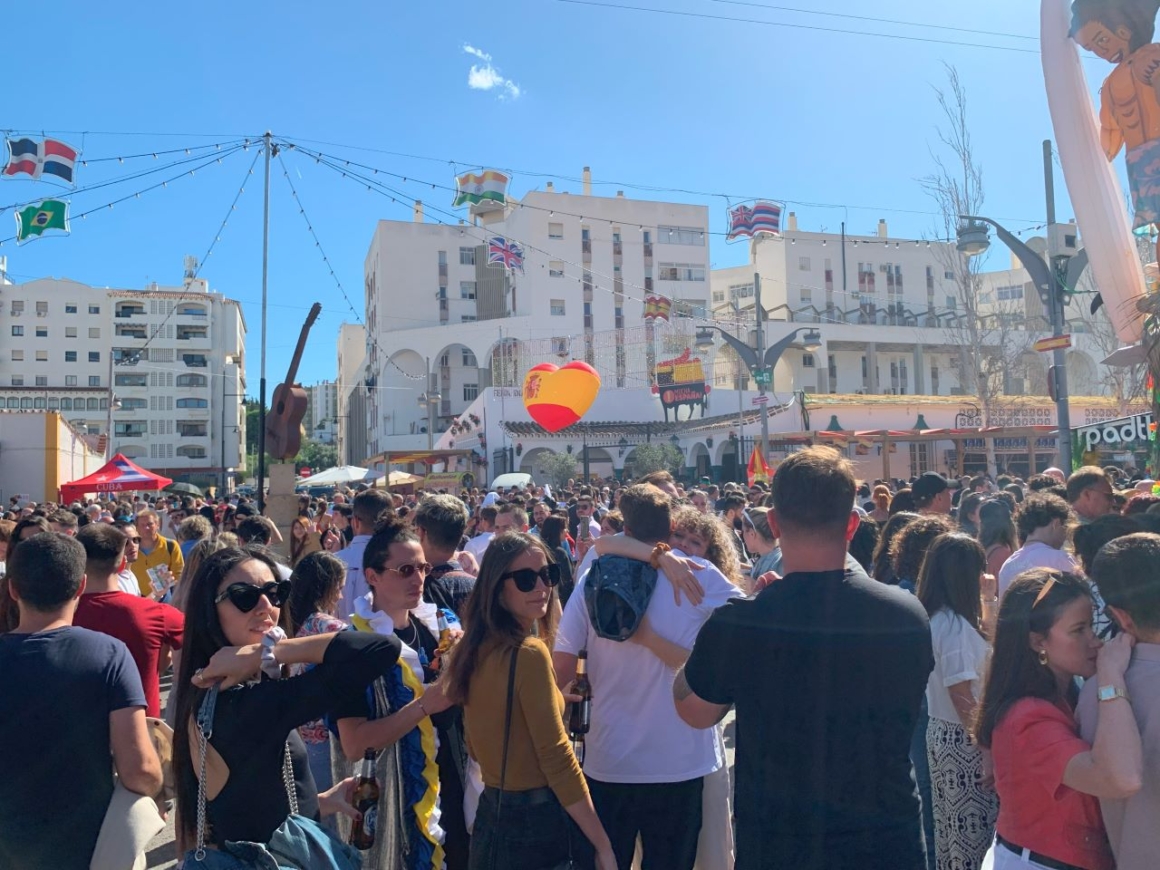
Can you drink tap water in the Costa del Sol?
In theory, you can drink tap water in the Costa del Sol, as well as in the rest of Spain. Most people say tap water here has a taste, though, and they are right, it does. It comes from the minerals that are dissolved in the water, naturally. It’s harmless, but I am not fond of that taste, so I added a filter to my home – and the water became perfectly tasteless; for those that come on vacation, I’d recommend getting a Brita filter, that is inexpensive and does the job.
So, the taste is not a problem, but there is something that may be: the fact that the Costa del Sol undergoes periodic droughts. When the level of water in reservoirs lowers too much, the water that is left is coming from the bottom, where most contaminants sink to. This water can be contaminated, and even poisonous. So, as a rule of thumb, don’t drink water from the tap in places that are undergoing a drought, be it in Spain or elsewhere. Assuming most people are not aware of the current levels of reservoirs in any given place, it is safer to always use a filter.
Related post:
Water in Spain insight – tap safety, drought risks and reservoir poisoning concerns
How is the transport in the Costa del Sol?
In terms of public transportation, keep in mind that Malaga, Torremolinos, Benalmadena and Fuengirola have great connections by bus and train, but out of that zone, it’s better to rely on a car – be it rented, taxis or Ubers. Malaga city also has a metro, and it is even possible to hire bicycles or scooters there, something that is rare to find in other areas – though I know of private companies offering scooter rentals in both Torremolinos and Marbella.
I find the train the best means of public transportation in the Costa del Sol, despite its small reach, only from Malaga to Fuengirola. In these areas, if I can go by train, that’s how I’m going – especially while we have the free trains, which will last at least till the end of 2024. The buses are my second option, because they are not nearly as reliable as the trains – in my experience, at least 1 out of 3 times they simply don’t come; I’m not talking about a few minutes late, it’s more like one bus is skipped, and then a 20-minute wait becomes a 40-minute wait.
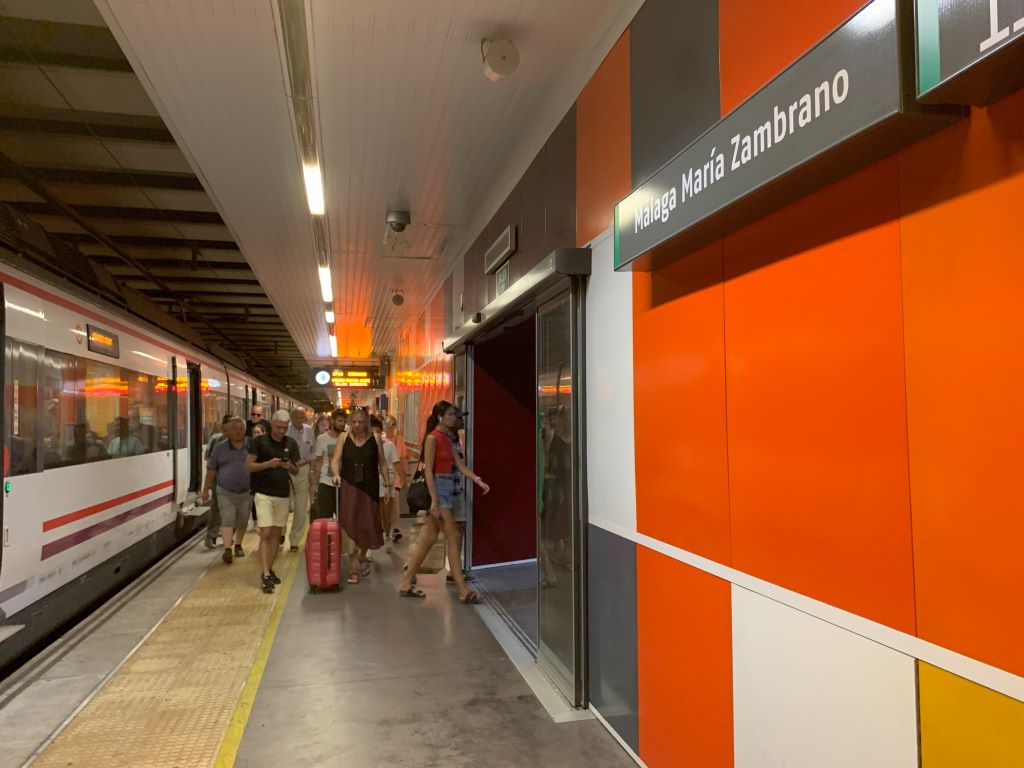
On busy days, the buses, when come, don’t stop because they are already full. That’s what happened during the last Corpus Christi, when I tried to reach Benalmadena Pueblo by bus and, after one that didn’t come and one that didn’t stop, I gave up and took a taxi. (I didn’t dare go by car because I thought finding a parking spot would be as challenging as finding a bus.) The taxi driver and I went all the way talking about the buses’ situation, and he seemed even more disturbed about it than I was! He said that in Barcelona the buses work much better; here, people often end up like me, having to resort to a taxi…
Renting a car is a great option, particularly if you don’t intend to use it in a crowded area, because finding parking is a challenge as well. But to go to Mijas, Marbella, Estepona or beyond, as well as to the Axarquía towns on normal days, a rental car is the way to go. Much more affordable than a taxi, with all the comfort. And the highway (A7) is very good and well maintained. It does charge expensive tolls, but you can Google Maps your way around them.
Related posts:
Free train tickets in the Costa del Sol – questions and answers
Bus and train cards in the Costa del Sol
Stress-free car rental in Malaga
Solving parking and parking tickets in the Costa del Sol
4 lessons we learned the hard way about driving in the Costa del Sol
Improve your travel game with Google Maps and other apps
How to pronounce Benalmádena?
Pronounce Benalmadena like this, so that the Taxi or Uber driver knows where you want to go:
How is the summer like in the Costa del Sol?
Hot! a bit too hot for my taste, actually. Temperatures are in the upper twenties or thirties, with some humidity. There are breezes, and sometimes stronger winds that both refresh and fly hats out of passerby’s heads. Sunscreen is essential – remember to bring hats (to fly), sunscreen and water anywhere you go. But don’t go very far during daytime, because of the heat; leave the promenade strolls for after 6 or 6:30 pm, because then the humidity and UV are lower, while the temperature is still warm.
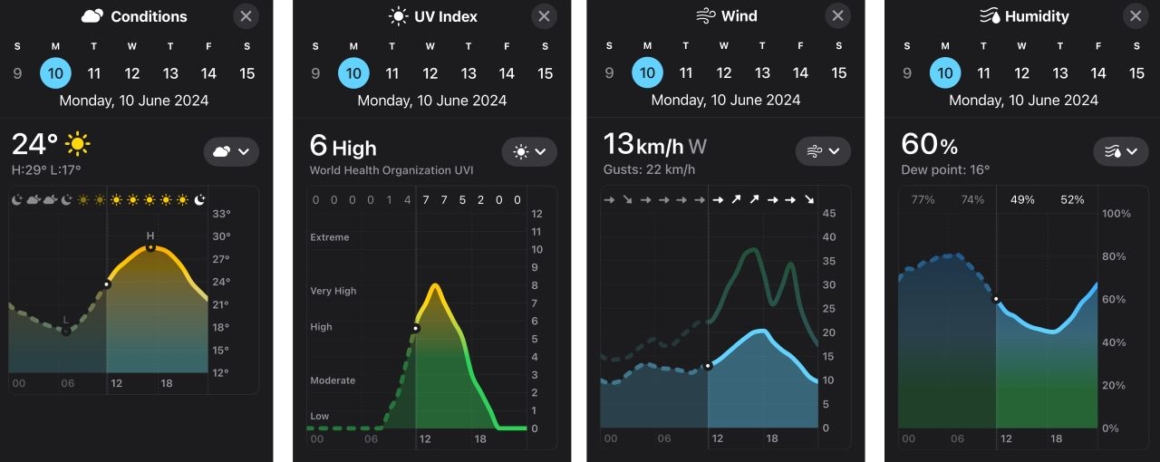
Sunsets happen after 9:30 pm during summer, so you can stroll in the sun for 3 hours; then pause for cocktails and snacks, and stroll some more, because the Costa del sol its quite nice at night as well. 🙂
Spaniards know their climate, so be assured you won’t be missing anything before 4 pm, because there is nothing happening anyway. You can wake up late, have a delicious Spanish breakfast in a bakery nearby, enjoy the pool or the beach under a parasol or a palm tree, head back for lunch in one of the many restaurants along the Costa, choosing among all sorts of cuisines (because we have it all!)
Just don’t try to have lunch before 2 pm, please. Restaurants are most likely closed before that; it’s the local habit. Then go back to the hotel or rental and enjoy a siesta – it’s so good to sleep at this time, with windows open and feeling the breeze… Also, there is nothing else to do until 4 or 5 pm. Shops are closed, except for supermarkets and shopping centers.
But reaching 5 or 6 pm, life starts. Most of the fairs (ferias) happen during summer, so come prepared to have fun! During the ferias, the cities get dressed for party, with special illuminations and lots of different activities going on in several stages around the cities! There are dance shows, music presentations, theater, workshops, even more food, funfairs, parades and more! The Town Halls and associations that make ferias every year are quite creative, and they come up with unexpected – but great – surprises. It’s amazing, really.
Some fairs go on through the nighttime (Fuengirola just had one in May that went up to 4 am for a week!) but funfairs usually close earlier, about 1 am (I am writing as if it was normal, but even after 2 years here, I don’t feel its normal to have kids up and down a rollercoaster this late! But the Spanish do; it’s summer vacations, game on!) So, yeah, come prepared for fun; these people know how to party.
Related posts:
Summer in the Costa del Sol
The best of June in the Costa del Sol
How is the weather in the Costa del sol? (month by month)
The amazing ferias of the Costa del Sol
How is the winter like in the Costa del Sol?
Fantastic. Better than expected. At the very early morning (I’m talking 8 am) we kinda wear gloves and scarfs (probably because I’m Brazilian and dress Kiddo like that to go to school; most parents do not); by 10 am the warm-countries kids have already lost their scarfs and gloves, which pile up in the school to be picked up from the lost and found. By 12, it is not winter at all. Kiddo comes back home at 2 pm with half the clothes he went in, and that’s it.
The days are beautiful, with lots of sunshine; it is the perfect time to go sightseeing, as the weather allows for comfortable long walks. There is so much to see in the Costa del Sol! Beautiful towns, beautiful pueblos, fantastic temperature, flowers all around, blue skies! The whole of December is Christmas, and the cities are fully decorated for the occasion (from the last week of November till the first of January, actually). In February, there is Carnival, and the towns prepare lots of parties and events to keep everybody’s mood up. It’s fun!
Bring a light coat, the kind you would use in the airplane anyway, and enjoy; If you are like me, used to warmer weather and going out in the early morning, bring a scarf too.
I used to think one could not really sunbathe in the Costa del Sol during winter, because it was too cold for that, but I guess that was the Brazilian in me speaking. I still think it is too cold for that, but it is not the same for everybody, and some people do manage to go to the beach in a bikini in February for a tan. I would say it is a minority of people in a minority of really warm days, anyway; I wouldn’t like to hype your expectations that much.
If you come during the winter looking forward to running away from snow, cold, and darkness, I think you’ll be very happy in the Costa del Sol; if the plan is to sunbathe, perhaps not. Hubby, Estonian, spends blissful winters on the Costa del Sol just for wearing bermudas and not having to deal with a snow shovel; I guess expectations really matter.
Related posts:
Winter on the Costa del Sol
The best of February in the Costa del Sol
How is the weather in the Costa del sol? (month by month)
Time in the Costa del Sol
If you are wondering what is the time difference between where you are now and the Costa del Sol, here is the time now in Málaga:
The whole Costa del Sol has the same time, which is the same as the rest of Spain. Actually, most of western Europe is in the same time zone, so Paris, Berlin, Rome and Torremolinos all have the same time! 🙂
Conclusion
All year long, you are sure to enjoy the Costa del Sol, whether you prefer the seaside or the mountains. Full of color, flowers and blue skies, with great (and healthy!) food and affordable accommodations, lots of activities and entertainment, the Costa del Sol is a success among people of all ages, both for vacations or for residence. If you are new to the area, you are in for a great surprise. Come and enjoy the place of the best holidays and make great memories; you only risk falling in love and moving in permanently. 😉
